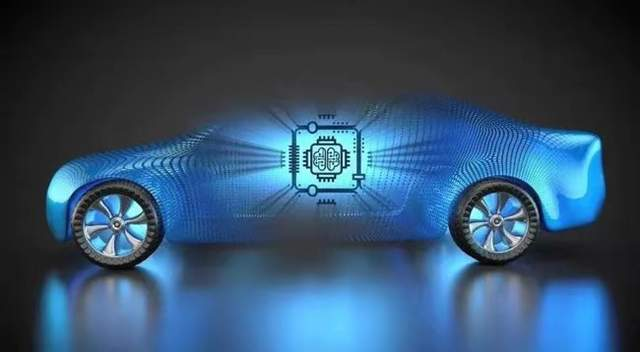What Exactly Are “Automotive-Grade Chips ”?
In the field of new energy vehicles (NEVs), especially in autonomous driving systems, automotive-grade chips play a crucial role. Reports indicate that as autonomous driving technology advances, the number of chips in a single vehicle has surged from 500–600 in traditional cars to over 1,000 in modern EVs, and even more than 3,000 in L4-level autonomous vehicles. The reliability and safety of these chips directly determine the stability of the entire vehicle system.
It is important to note that “automotive-grade” is not just a marketing buzzword. To qualify, a chip must undergo rigorous certifications across multiple dimensions, including device reliability, functional safety, and quality management.

📑 Common Standards and Their Meanings
🔹 AEC-Q Series (Reliability Standards)
AEC-Q100: Focuses on semiconductor reliability in automotive environments, testing chips under extreme conditions such as –40°C to +125°C over long periods without failure.
Other sub-standards include:
AEC-Q101 (discrete devices like transistors and diodes)
AEC-Q102 (optoelectronic devices)
AEC-Q103 (MEMS sensors)
AEC-Q104 (multi-chip modules, MCM)
These certifications simulate more than 10 years of usage, with test cycles often lasting over six months.
🔹 IATF 16949 (Quality Management)
This standard ensures strict quality management systems in the automotive supply chain, covering stable production, traceability, and defect control.
🔹 ISO 26262 (Functional Safety)
This international standard defines Automotive Safety Integrity Levels (ASIL A–D). ASIL-D, the highest level, is applied to critical systems such as airbags and braking. In autonomous driving, many systems must meet ASIL-D requirements, demanding redundancy, fault tree analysis, and rigorous testing.
🔹 Other Related Standards
EMC/EMI Compliance: Standards like CISPR 25 and ISO 11452 ensure chips function reliably in high electromagnetic interference environments.
Chinese Standards: China is actively building its own automotive chip standards to match the electrification and intelligentization trends.

⚖️ Automotive-Grade vs. Non-Automotive Chips
| Dimension | Non-Automotive (Consumer/Industrial) | Automotive-Grade |
|---|---|---|
| Temperature Range | 0°C ~ +70°C | –40°C ~ +125°C (or higher) |
| Lifetime | 3–5 years | 10+ years required |
| EMC/EMI | Lenient testing | Strict CISPR 25, ISO 11452 compliance |
| Functional Safety | Rarely ISO 26262 certified | Must meet ASIL-B to ASIL-D |
| Quality Management | General production processes | Requires IATF 16949 |
| Software & Security | Agile methods, basic testing | Full safety lifecycle, ASIL validation, security isolation |
In short: automotive-grade chips far exceed consumer-grade chips in durability, stability, safety, and lifecycle management—making them essential for safe autonomous driving.

🤖 The Deep Connection Between Automotive-Grade Chips and Autonomous Driving
1️⃣ Computing Power & Real-Time Performance
Autonomous driving requires processing vast sensor data from cameras, LiDAR, and radars. Automotive-grade chips with built-in AI engines (SoC, NPU) ensure high-performance processing under strict safety and thermal conditions.
Chinese companies like Horizon Robotics and Black Sesame Technologies are launching powerful L2–L4 automotive-grade AI chips (e.g., the “Journey” series).
2️⃣ Lifecycle Stability & Supply Chain Security
Since vehicles operate for 10–30 years, chips must come with long-term supply guarantees and consistent batches. This prevents risks from supply disruptions.
3️⃣ Functional Safety & Redundancy
Autonomous systems are mission-critical—failures can cause accidents. Automotive-grade chips follow ISO 26262 workflows, implementing redundancy, fault tolerance, and strict safety validation.
4️⃣ Resilience to Electromagnetic & Cyber Threats
Vehicles face complex electromagnetic environments and cybersecurity risks. Automotive-grade chips incorporate EMC compliance and cybersecurity management (CSMS), defending against OTA update vulnerabilities and network attacks.
5️⃣ Cross-Domain Collaboration & Compute Sharing
Future autonomous driving relies on cross-domain compute sharing between intelligent cockpit, ADAS, and autonomous driving systems. Automotive-grade chips act as the central platform, enabling smoother interaction and optimized resource utilization.

🔮 Future Trends of Automotive-Grade Chips in Autonomous Driving
Process Technology Upgrade: Moving toward 7nm and below to meet performance and power demands.
Rise of Chinese Ecosystem: Domestic leaders like Horizon Robotics, Black Sesame, and GigaDevice are driving innovation in local automotive-grade chip design.
Regulatory Compliance: With UNECE, ISO, and SAE standards evolving, chipmakers must enhance compliance in functional safety and cybersecurity.
Software-Hardware Co-Optimization: Future chipmakers will provide complete SDKs, reference designs, and toolchains to help automakers optimize full-vehicle autonomous systems.

✅ Conclusion
Automotive-grade chips are the backbone of autonomous driving. From safety and reliability to long lifecycle support, they provide the essential foundation for the future of intelligent mobility.
Please explore our blog for the latest news and offers from the EV market.





